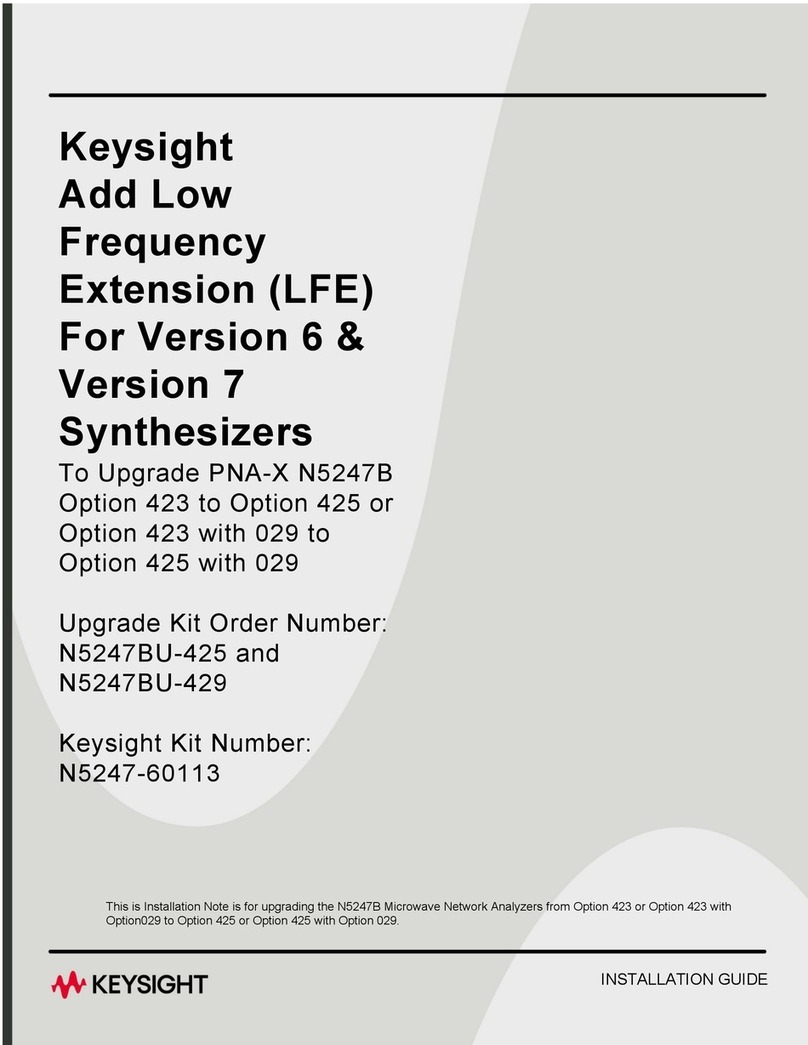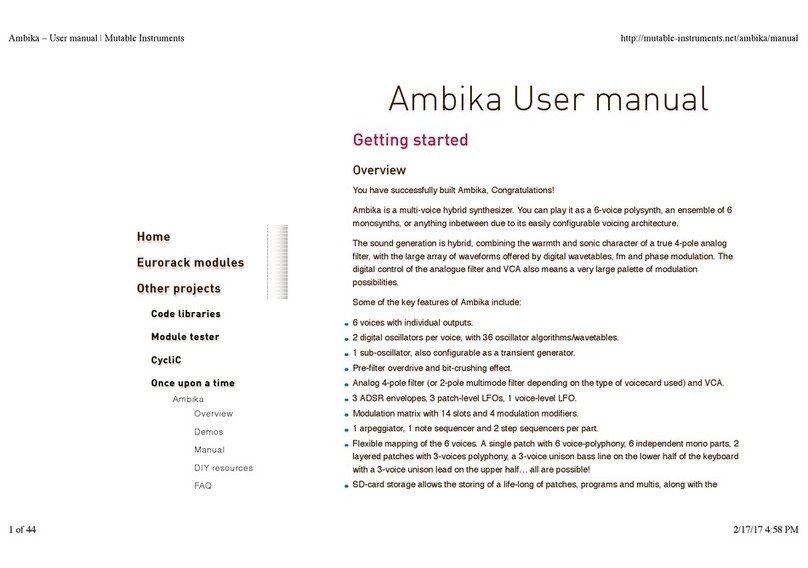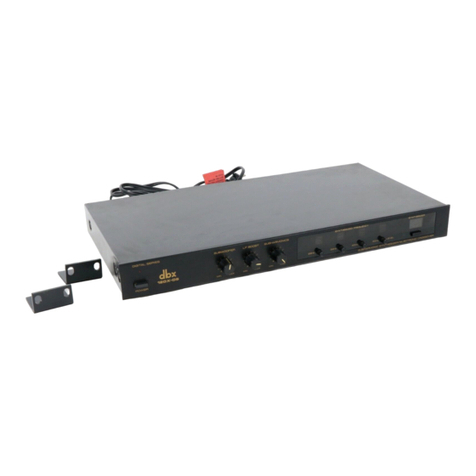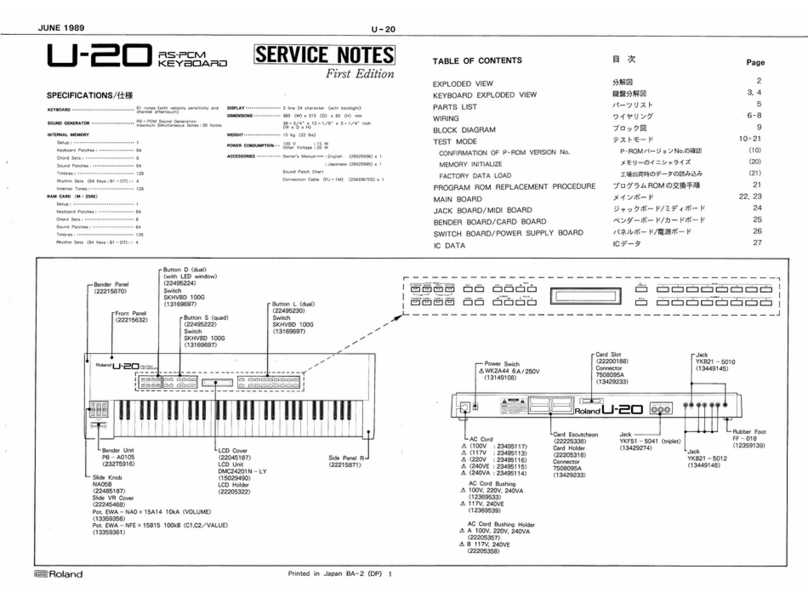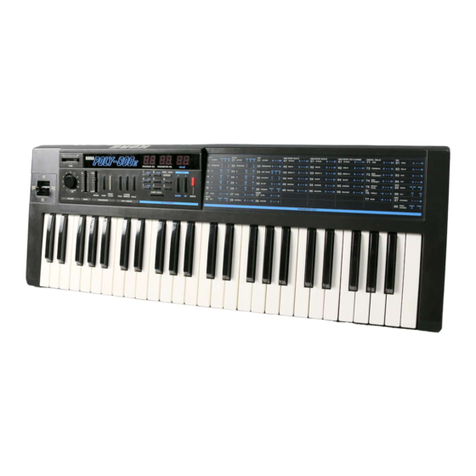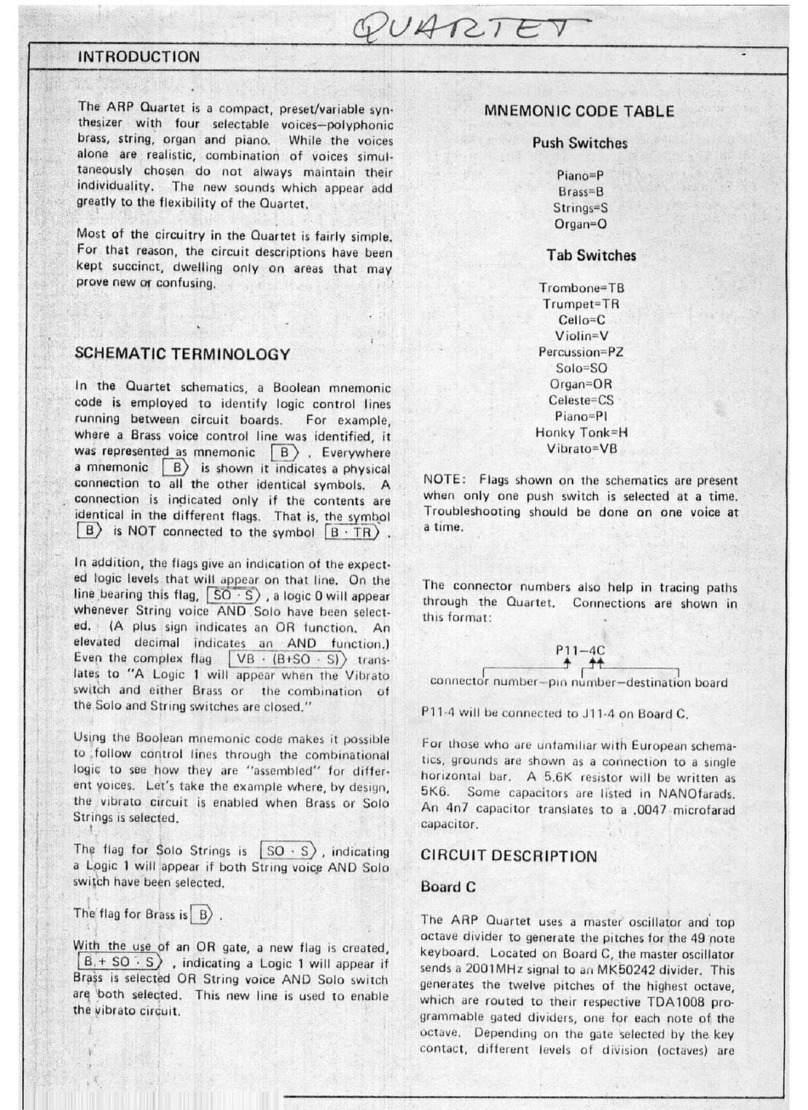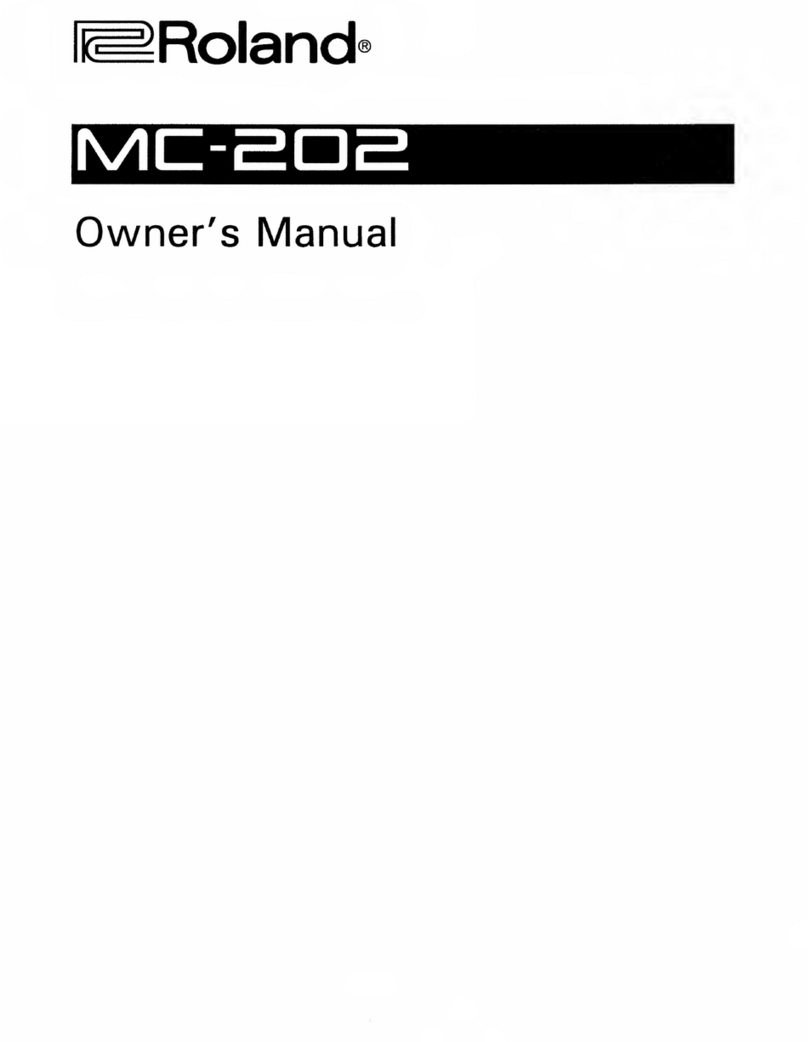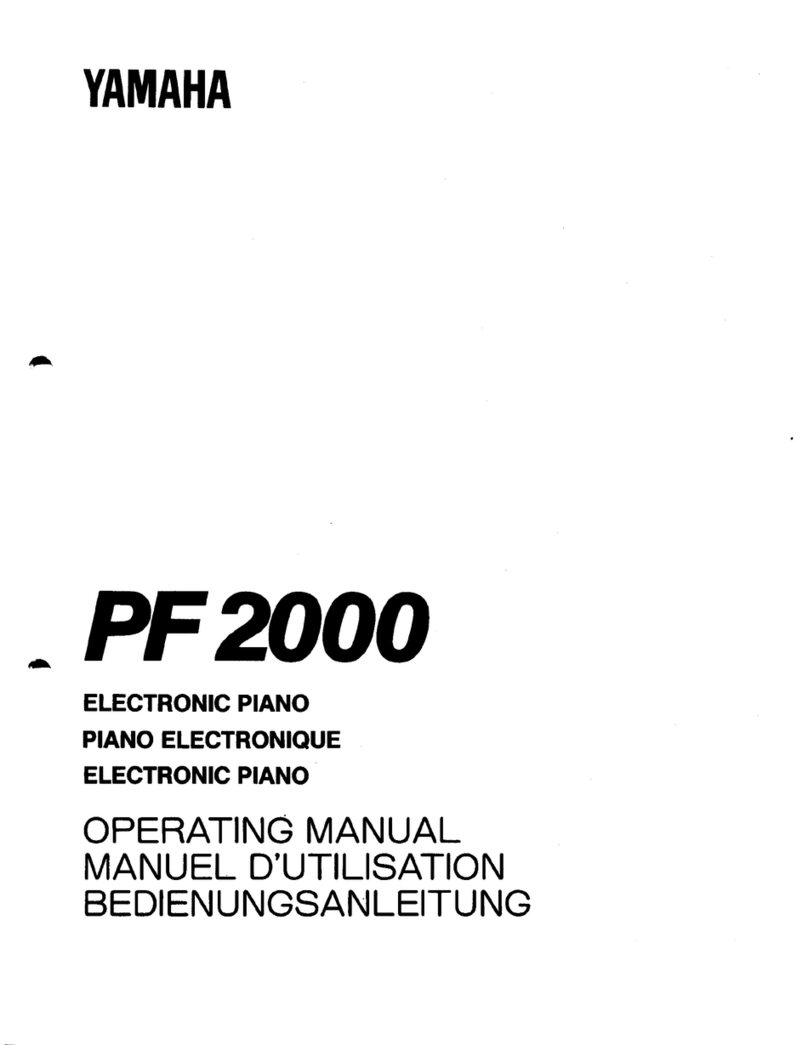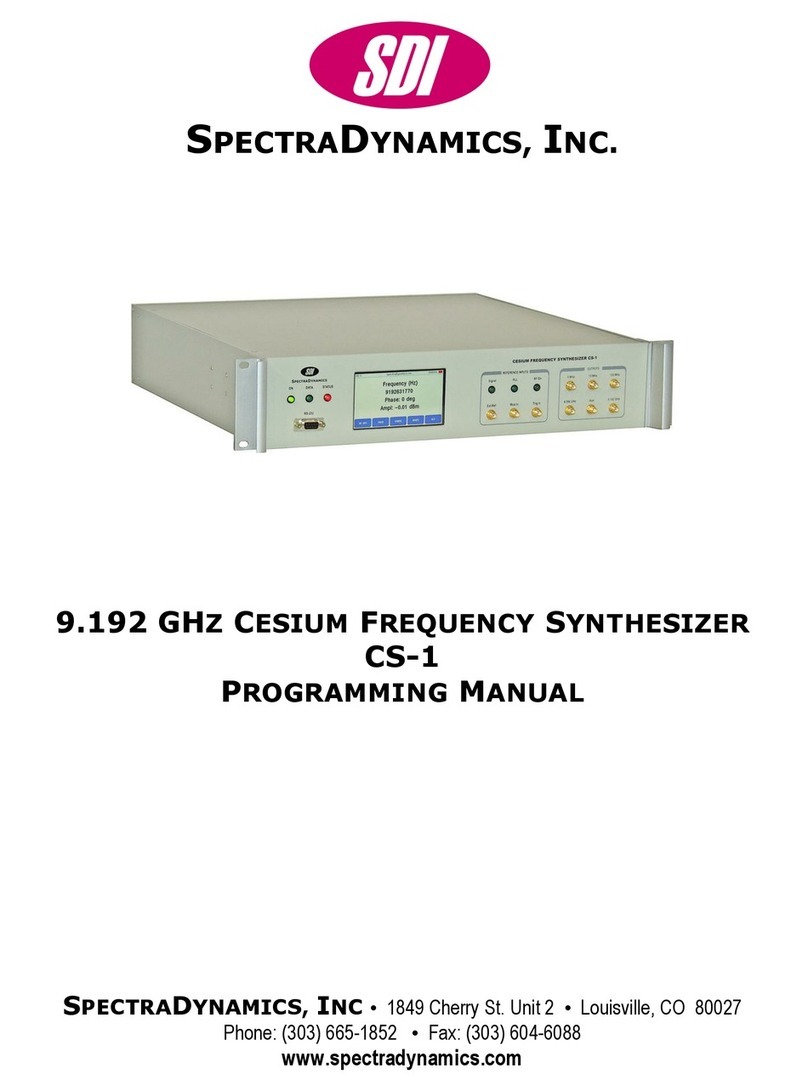Flower Electronics Little Boy Blue User manual

flower electronics
Little Boy Blue
Manual & Tutorial
www.owerelectronics.com

Congratulations on your
Little Boy Blue!
Two voltage-controlled oscillators
Preamp and envelope follower
Intermodulating output stage
Can generate sound, or process external signal
Runs on one 9v battery
Power is disconnected when output cable is unplugged
The Little Boy Blue comes with a set of 7 banana patch cables.
Output and external input are via standard 1/4” connectors.
a rugged
synthesizer
designed with
the
touring
musician
in mind
Part I: What is Little Boy Blue?

left to right:
Preamp with variable gain:
yellow jack: input
left 1/4” jack: input
(those two are connected
together)
orange jack: output
knob: gain
gain range is approximately
unity to x10 (0 to +20 dB)
Oscillator 1:
yellow: control voltage in
orange: oscillator out
knob: frequency
frequency range is approximately 1 Hz to 6
kHz
control characteristic is exponential (not
intended for critical pitch tracking applica-
tions)
Output stage:
left yellow: mix 1
white: insert (goes directly to master volume
– no separate gain control)
red: main output
right yellow: mix 2
left 1/4” jack: main output (directly connect-
ed to red)
left knob: gain for mix 1
middle knob: master volume (note: the mas-
ter volume is eccentric. Volume is loudest
at approximately two-third’s range, and the
signal will be clipped to nothing at either ex-
treme. )
right knob: gain for mix 2
The red output jack is for making feedback
patches. (See section 4)
The LBB puts out a very hot signal. Start out
with the amplifier volume very low. If using
LBB with a mixer, keep the input trim at its
lowest gain setting.
Oscillator 2 (same as osc 1)
Envelope follower:
Yellow: input
Orange: output
Knob: optional attenuator
The envelope follower turns an audio signal
into a control voltage. The knob can invert
the control voltage when it’s to the left, or
pass it normally when it’s to the right. In the
middle, there’s no output. You can think of it
as a bidirectional volume control.
preamp mix 1 mix 2 env
follower
osc 1 main out osc 2
Part II: How Does LBB Work?

Main out to
amplifier
Osc 1 out to mix 1
Osc 2 out to osc 1 cv
in
Set master volume
to 2:00 o’clock
Set osc 1 frequency
to 12:00 o’clock
Set osc 2 frequency
to 8:30 o’clock
Turn up mix 1 level until you hear a sound
in the speaker (note: if it’s too quiet, adjust
the master volume to the loudest point of its
range)
You should hear a warbling sound in the
speaker. Osc 2 is controlling the pitch of osc
1. As you turn up the frequency of osc 2, the
sound will become continuous and discor-
dant. This is called frequency modulation.
Experiment with different settings of the
two oscillator pitch controls, and the mas-
ter volume. The tone you hear is a complex
function of the pitches of the two oscilla-
tors, and the distorting effect of the master
volume further alters the harmonic con-
tent. You’ll hear a wide range of clangorous
tones.
Congratulations! You made your first sound
with the LBB.
Microphone or guitar
to left 1/4” jack (note:
may need to use a
preamp or boost pedal
first)
Preamp out to mix 1
Adjust mix 1 and
master
Part III: How to Make a Sound
Example 1:
Basic FM
Example 2: External Input

Example 1:
Example 2:
After you get used
to the basic patches,
you can try some
more complicated
ones. These exam-
ples are just some
ideas to get you
started. The most
important thing is to
try a lot of different
combinations, and
don’t be discour-
aged if you don’t find
what you want right
away. Because when
you do find the mag-
ic spots, it makes it
all worth it!
Part IV: More Complex Patches
Osc 1 to preamp input
Osc 1 to insert
Preamp out to osc 2 cv
Osc 2 to Osc 1 cv
This patch does a lot of weird
frequency locking and division.
Sometimes it sounds like the
solo in a Lighting Bolt song!
Osc 1 to osc 2 cv
Osc 2 to mix 2
Main out to envelope follower in
Envelope out to osc 1 cv
I had the envelope
follower all the way
down and I was get-
ting some weird
footsteps running in
and out. Kind of like
that ghost movie I
watched last night!

Part V: Care and Feeding of
Little Boy Blue
The Little Boy Blue was designed with
reliability in mind. The only regu-
lar maintenance it should need is to
change the battery. The LBB will let
you know when it’s getting weak, be-
cause the oscillators won’t go as high
and the sound will get dull and listless.
Remove the six screws on the bottom
of the case, exchange the dead battery
for a new one, wrap the foam around
the battery, and put it back in place as
shown. Now you’re good to go!
Changing the
Battery
Repairing the Banana Cables
straight plug
(johnson)
wires pass
through hole and
wrap around
If this one gets
loose, just screw
it back together!
bare
wires
“stacker”
(pomona)
bare
wires
go in
here
top
view
There’s a set screw to hold
the wire in place. You can
tighten it with a flat-blade
jeweler’s screwdriver (3mm
is good).
Both kinds of banana plug
are solderless. If the cable
falls apart, don’t throw it
out! It’s easy to put it back
together.
If you would like more cables,
you should also be able to use
any standard banana plug. Or
you can make your own!
This manual suits for next models
1
Table of contents
